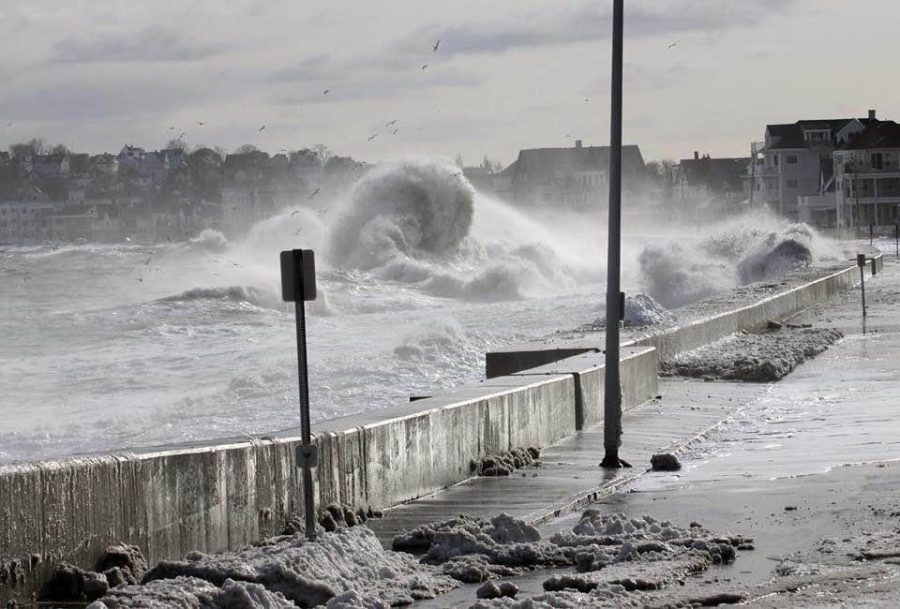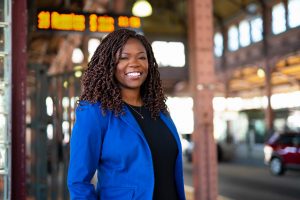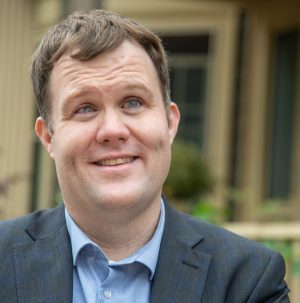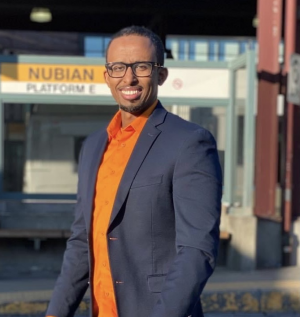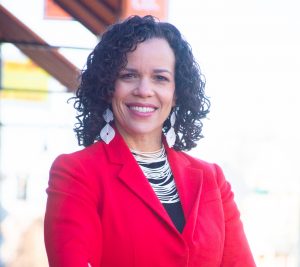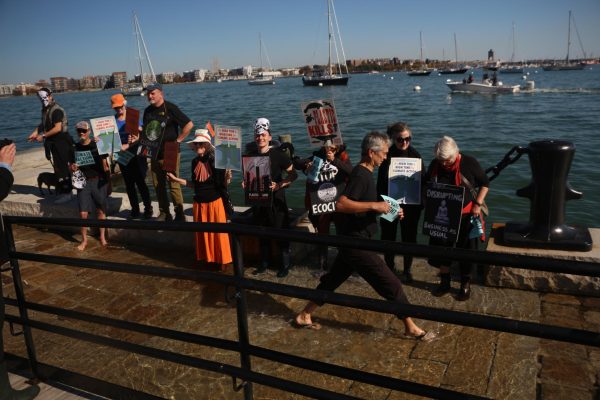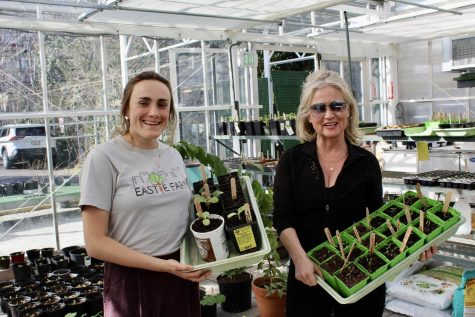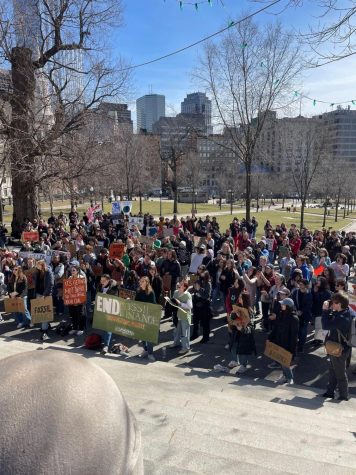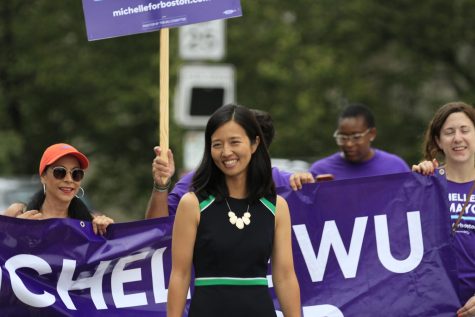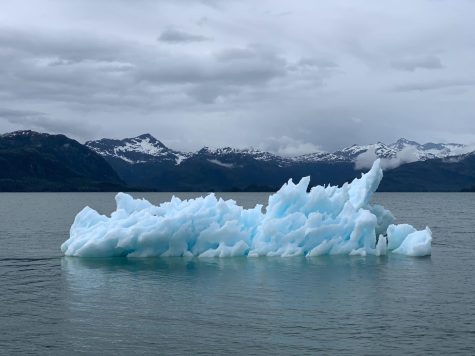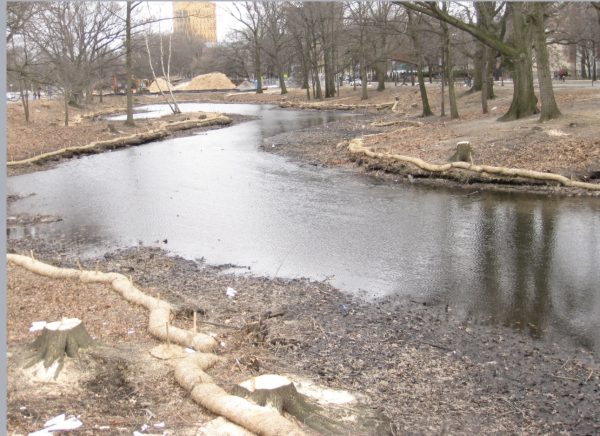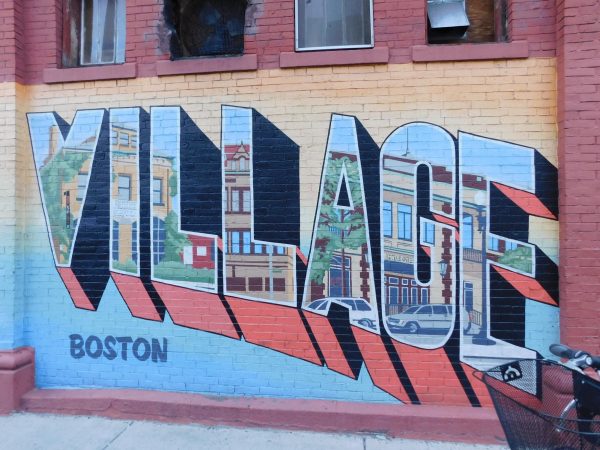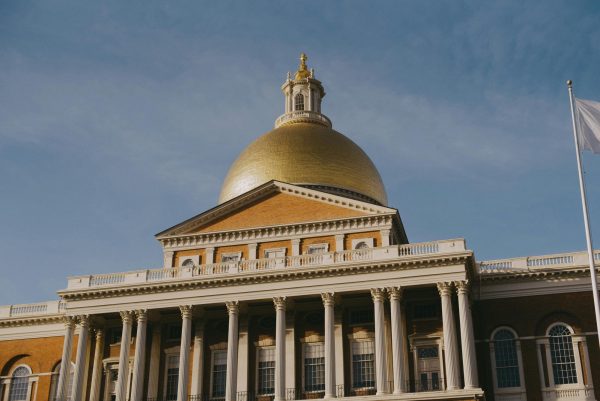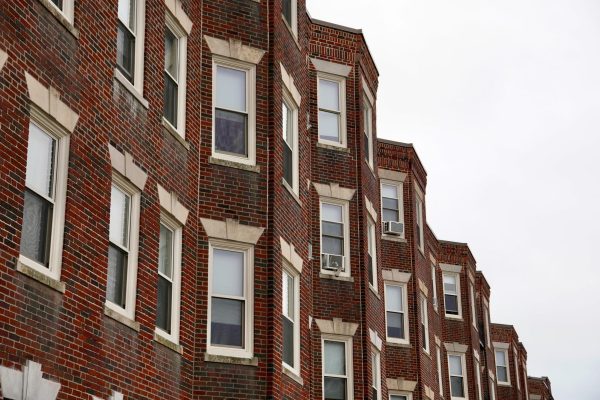In the race to solve Boston Harbor’s coastal flooding problem, who calls the shots?
In recent years, the fight to stop coastal flooding in the Boston Harbor region has become a breeding ground for community-level activism and policymaking. But, as more ideas and proposals emerge, a clear solution for the city and its neighboring towns seems out of reach.
Photo: Joanne McKenna
Waves seen climbing higher than normal and spilling on to Route 145, which runs through East Boston to Winthrop, on Winthrop Parkway.
On Nov. 30, at 8:30 in the morning, Heather O’Brien pulled out her laptop and logged into a packed Zoom call.
The participant list included attendees from every neighborhood on the Boston Harbor. Some were politicians or bureaucrats, and others were teachers or engineers. Even sailors, one of them still at sea, made time to dial into this meeting.
This was the monthly virtual assembly of the Boston Harbor Regional Storm Surge Working Group – an association of public and private sector volunteers working to protect the region from three major environmental threats: climate-related sea-level rise, storm surges and stormwater, which flood the area’s homes and communities at an alarming and increasingly severe rate. Although the event is not advertised to the public, anyone interested in the cause is welcome to attend.
“I mean, you can just see the range of stakeholders here,” said O’Brien, an East Boston resident and marine educator who has planned and volunteered with the working group for nearly five years. She believes that an equitable solution for coastal flooding must be backed by every town along the Boston Harbor that has been affected by coastal flooding. “Everybody’s invited to the table.”
That table is filling up quickly. Throughout the Boston Harbor, from Hull to Winthrop, community-driven projects like O’Brien’s have been hustling to get their initiatives off the ground. But, while ideas for solving the coastal flooding problem are plentiful, experts warn that without a cohesive approach across the board, these projects may not reach the outcome needed to save Boston from a future below water.
“Everybody wants the same thing, but there is no unified vision to get us there,” says Katherine Kahl, a professor at the University of Massachusetts, Amherst, whose work focuses on the relationship between coastal resilience, climate adaptation and community engagement.
“Without someone at the helm understanding that big picture – considering the perspectives of not just community leaders, but a whole range of perspectives from businesses, citizens, NGOs – it’s not gonna move forward.”
Scientists argue that coming up with this collective vision for coastal resilience and deciding on a path forward is an urgent need for the Greater Boston area.
Paul Kirshen is a professor at the University of Massachusetts, Boston, and a leading expert on coastal flooding in the Metro Boston region. His research has pointed to a concerning trend: as climate change progresses, rare extreme weather events will become more frequent, leading to worsened flooding at high tide and stronger storm surges. Compounded with the slow effects of sea-level rise, the impact on Boston’s coastal infrastructure and communities will be devastating.
“An area that might get flooded, like, once every couple of months, now that flooding will be in a larger area, and more frequent, just because of high tides,” said Kirshen on a phone call. “And with the storm surge, these major floods we get on the average once every 100 years are now going to occur every 10 years.”
There’s no way to predict whether the risk of major flooding in Boston can be stopped, but if the city wants to mitigate the impact, the time for action, Kirshen says, is now.
“Some areas need protection immediately, like the East Boston Greenway,” he said. Located between an abandoned railroad and the waterfront, the Mary Ellen Welch Greenway is one of East Boston’s largest outdoor activity spaces – and a major flood-zone risk, which, when flooded, can drain water into the nearby neighborhoods.
Every year, the chances of Boston experiencing a major coastal flooding event – like the record-breaking storm surges experienced by New York and New Jersey during Hurricane Ida in September, which reached heights of up to 5 feet and killed dozens – become more likely. New voices join the conversation every day, but the question of what will be done about it and who makes that call is still unclear.
Over the course of around six years, the number of initiatives tackling the harbor’s flooding issue has grown steadily. Many of them, including non-profits Boston Harbor Now and The Harborkeepers, emerged in 2016 – just in time for the city of Boston to launch its own coastal resilience project, “Climate Ready Boston.”
Developed under former Mayor Marty Walsh’s administration and published in 2017, “Climate Ready Boston” features projections about the impact of climate change in the city along with options proposed to solve the problem. The solutions revolve around policy and urban planning, implemented on a neighborhood-by-neighborhood basis within Boston’s official boundaries. That means areas like Chelsea and Revere, which lie outside of city lines but still bear the brunt of the harbor’s coastal flooding impacts, don’t receive the benefit of Boston’s big-city infrastructure.
Since its release, many publicly funded projects across the city’s departments have been shaped by the “Climate Ready Boston” approach. Zoning and community development efforts, for example, are informed by the initiative’s recommendations, says Chris Busch, the assistant deputy director of the Boston Planning and Development Agency’s climate planning branch.
“With Climate Ready, the strategy is to be working at different layers of resilience,” said Busch, referring to the plan’s neighborhood-specific methods for addressing climate change and coastal flooding.
The plan is still in its early phases, and it’s too soon to say how effective “Climate Ready Boston” will be. Regardless, the city’s neighborhood-level focus is too narrow for some activists in the coastal flooding space.
Bill Golden – an attorney and former state senator known for filing a lawsuit as Quincy’s city solicitor in 1982, which pushed Boston’s government to finally take responsibility for the harbor’s century-old pollution problem – is the director of the Boston Harbor Storm Surge Working Group.
With his project, Golden argues that the only way to protect Greater Boston from storm surges, tidal flooding and sea-level rise is by employing a regional “multilayered defense” built on a mix of legislation and coastal resilience infrastructure. Mainly, this would include the construction of seawalls and a massive seagate – which could open and close as needed to block out storm surges and keep high seas at bay in the Boston Harbor. Modeled after the New Bedford Hurricane Protection Barrier, Golden says this investment would protect all 15 of the area’s harborfront towns from damaging floods.
“The City of Boston has focused on land-based infrastructure solutions to sea-level rise and stormwater,” said Golden in the working group’s November Zoom call. “We believe that it’s good in the extent that it’s protecting particular neighborhoods, but in the long term, it doesn’t provide local protection, nor does it protect regional communities. Our defense is the only approach that is proven to deal with all three existential threats: sea-level rise, storm surge and stormwater.”
Activists opposing city policy are nothing new, but reaching a resolution becomes more challenging when conflict appears among the activists themselves. This is the case with some of Golden’s peers – including Kirshen, who also serves as director of the Stone Living Lab, a research and education center focused on climate adaptation.
“Our research found that the best solution, at least until the next century, until around 2070, is to elevate the coastline with nature-based solutions,” he explained on the phone.
In Kirshen’s opinion, the city should opt for investments like man-made coastal ecosystems, which naturally protect the shoreline during storms while also providing biological benefits to the environment. He believes there are too many unknowns in climate research to justify constructing an expensive and permanent infrastructure project like Golden’s seagate.
“The difference between our approaches,” he said, “is Bill wants to build this damn wall right now, and I’m saying, let’s see what happens first.”
Other organizations believe finding an answer for coastal flooding depends on more than just city infrastructure or policy. For example, the Neighborhood of Affordable Housing, or NOAH – an East Boston-based non-profit – runs a climate resilience program aiming to support those most vulnerable to flood risk. Their goal is to connect populations in need with flood relief resources and build stronger communities in the face of climate change.
“Flooding affects people’s mobility to function,” said Latifa Ziyad, NOAH’s resiliency planning coordinator. “When systems fail because of flooding, people who are on the lowest layer of employment don’t have the same safety nets. It has a far more devastating effect for those families.”
Every option put forward by these community leaders, infrastructure-based or otherwise, is doable with the right amount of cash and resources. With Mayor Michelle Wu in office, whose campaign featured climate justice as a key priority, and a newly passed infrastructure bill in Washington, organizations like the Boston Harbor Storm Surge Working Group hope to see some public funding allocated to their proposals.
This, however, hinges on community groups’ ability to look at the bigger picture and approach Boston’s coastal flooding problem in a collaborative and coordinated way, according to Kahl.
“Strong leadership at the community level, groups that can look beyond their community’s boundaries,” she said, “that’s how we develop creative solutions.”
Differences in opinion aside, it’s clear that those involved in the fight against sea-level rise, storm surges, and coastal flooding understand that the stakes are higher than they’ve ever been for the Boston Harbor and its waterfront communities.
In a closing message to the virtual working group crowd, Golden put the state of Boston’s future bluntly.
“We’re facing this existential threat,” he said. “Are we gonna save the city, or are we not gonna save the city? Either way, it’s politically viable, and it’s a choice we have to make.”
Editor’s note 6/11/22: Upon original publication and unknowingly, Heather O’Brien was incorrectly credited as the featured photo image owner. The actual photographer is Joanna McKenna, and this image was originally taken in 2014.



